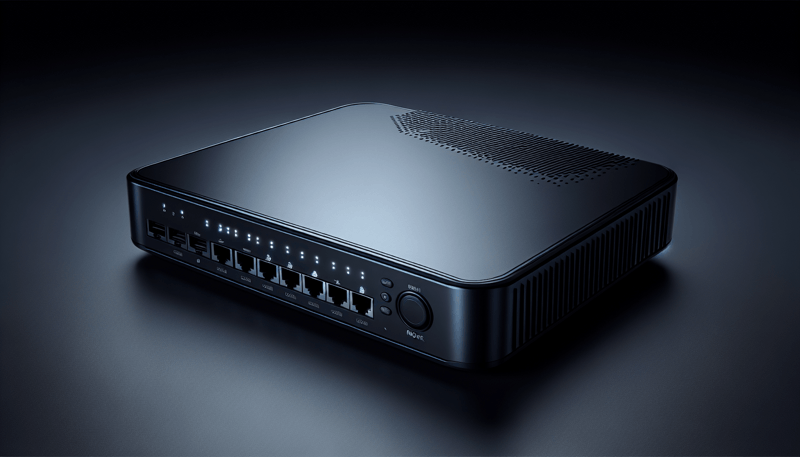
Optimizing your PowerMTA configuration for different Internet Service Providers (ISPs) is crucial for improving email deliverability.
Understanding the specific settings and configurations required for each ISP can make a significant difference.
From VLAN tagging to MTU settings, each ISP may have unique requirements.
In this article, we will explore the importance of ISP-specific configuration in PowerMTA.
We will provide detailed technical guidance on how to set up your PowerMTA for different ISPs.
Let’s dive into the world of ISP-specific configuration in PowerMTA!
What is ISP-specific configuration in PowerMTA?
ISP-specific configurations commonly include settings for PPPoE, VLAN tagging, routing, ISP domains, gateway configurations, and DHCP.
Users typically need to configure parameters like ISP profile settings, WAN type, WAN IP address, and DNS settings to ensure proper connectivity.
Additionally, setting up interfaces, subinterfaces, and VLAN lists is necessary for a stable connection with the ISP.
Challenges can arise when users face issues with static IP assignments, routing configurations, or incompatible ISP settings with their router or modem.
Best practices for configuring ISPs in PowerMTA involve accessing the ISP Profile tab, setting up subinterfaces with the correct VLAN tagging, and entering necessary ISP details like usernames and passwords.
It’s essential to double-check values such as DSCP, IPv6 settings, and uplink VLAN tags to ensure seamless connectivity between the router and the ISP.
Examples of ISP-specific configurations
KPN in Netherlands
ISP-specific configuration in PowerMTA is important. It lets users adjust settings for their internet service provider. Custom ISP configurations help emails reach their destination by following the ISP’s network.
Connecting to ISP settings can be tricky. Users might struggle with terms like PPPoE and DSCP. They also need to manage various ISP profiles for different connections.
Important settings include VLAN tagging, IPv6, subinterfaces, and uplink VLAN tags. Users should enter details like IP addresses and usernames accurately. This ensures a secure connection.
In the eero app or router interface, users can modify WAN type, DHCP, and WAN IP address. This simplifies network settings.
TPG in Australia
ISP-specific configuration in PowerMTA refers to customized settings for the internet service provider (ISP) a subscriber is using.
This customization includes details such as ISP domains, routes, interface configurations, and settings for protocols like PPPoE and IPv6.
Users must customize routing pages, ISP profile tabs, and WAN types to match their specific ISP requirements.
Examples of ISP-specific configurations include setting VLAN tagging, configuring static IP addresses, adjusting DSCP parameters, and defining uplink VLAN tags.
Users may also need to input usernames, passwords, and authentication details in the ISP profile section.
Understanding and correctly implementing ISP-specific configurations is essential for seamless connectivity and accurate routing on PowerMTA routers.
Vodafone in Germany
Customizing PowerMTA for specific Internet Service Providers involves tailoring settings to meet their requirements. This customization includes configurations for ISP route, subscriber, DSCP markings, domains, gateway, settings, static IP, and routing.
Users can optimize email delivery and enhance deliverability rates by configuring PowerMTA with custom ISP settings. Examples include setting up unique ISP profiles for providers like TPG, Epic, and KPN. Parameters like WAN IP address, VLAN tagging, PPPoE settings, and VLAN list can be defined for each ISP, ensuring proper email routing and reducing spam marking or delivery issues.
Custom ISP configurations offer benefits like improved connectivity, routing efficiency, delivery performance, and control over email paths. Common elements in these configurations include interface settings, VLAN tagging, routing pages, WAN types, DHCP settings, and network settings. Properly configuring these elements enables users to establish reliable connections with different ISPs for successful email delivery.
A1 Telekom Austria in Austria
Configuring PowerMTA specifically for your Internet Service Provider is important. This ensures a smooth connection and better performance. Adjusting settings to meet your ISP’s requirements helps establish a reliable connection and improve network efficiency.
Common elements in ISP configurations include PPPoE, static IP, and VLAN tagging. These settings allow for a more personalized network setup. However, challenges such as misconfigured ISP domains, routing errors, and hardware compatibility issues can occur.
To address these challenges, it’s crucial to navigate ISP settings, configure routing, and set up the WAN type correctly. Understanding parameters, using commands effectively, and entering the correct ISP information can enhance connectivity and improve the online experience.
Benefits of custom ISP configurations
Setting up PowerMTA for different Internet Service Providers involves customizing specific parameters for each ISP. This customization helps ensure a smooth connection experience for users.
Configuration settings include ISP routes, subscriber details, DSCP values, IPv6 settings, VLAN tagging, and routing. For example:
- Creating subinterfaces for various ISP domains
- Implementing VLAN tagging for specific services
- Setting up static IP addresses for routing
- Adjusting WAN types for different ISPs
Users can access these configurations via the ISP Profile tab. Here, they can enter usernames, network information, and gateway values. By tailoring these settings to meet each ISP’s needs, users can enhance their connectivity and optimize the performance of their routers and modems.
Common elements in ISP configurations
FTTH vs. VDSL2
Setting up PowerMTA for different ISPs involves configuring various settings like ISP route, ISP domains, DSCP, IPv6, VLAN tagging, subinterfaces, WAN type, DHCP, static IP, gateway, and network settings.
Users can input ISP information such as username, WAN IP address, uplink VLAN tag, and more in the ISP profile tab and routing page within the router’s interface.
By specifying these settings based on ISP requirements, the router can establish proper connectivity and route traffic accurately. For instance, assigning VLAN lists and commands helps aggregate and route traffic per ISP profile, ensuring smooth internet services.
Additionally, enabling bridge mode on the router can enhance connectivity and optimize services for users using different ISPs.
IPTV integration
Setting up ISP-specific configuration in PowerMTA involves entering necessary parameters for your internet service provider to ensure proper connectivity.
This includes setting ISP route, subscriber username, ISP domains, static IP, WAN type, and ISP profile tab.
Users navigate to the routing page in the interface to input ISP information like WAN IP address, gateway, and DNS settings.
Examples of ISP-specific configurations include setting up VLAN tagging, PPPoE for authentication, configuring IPv6 connectivity, and creating subinterfaces for different services.
Advanced settings like DSCP, uplink VLAN tag, and 802.1p values can be adjusted for optimized routing.
By using commands within the router’s interface and specifying parameters in the ISP profile, users can ensure seamless connectivity tailored to their specific internet service provider.
Challenges of implementing ISP configurations
Configuring ISP-specific settings in PowerMTA is important.
This ensures smooth connectivity between the user’s network and the ISP’s domain. It involves setting up ISP routes, interface configurations, and routing parameters like DSCP values and IPv6 connectivity.
Users may face challenges when configuring settings for specific ISPs such as TPG, Bell Canada Fibe, and Epic.
Tasks like setting up VLAN tagging, PPPoE connections, and static IP addresses on routers or modems can be complex.
Devices like eero Pro 6 and eero 6 routers offer advanced features for ISP profiles, like uplink VLAN tagging and bridge mode.
Users need to input parameters carefully in the ISP profile tab or routing page.
Understanding routing commands, ISP-specific details, and key information like WAN IP address and Ethernet connectivity is vital for reliable internet access in PowerMTA.
Best practices for ISP-specific configuration in PowerMTA
Working with ISPs in Canada
Customizing settings in PowerMTA for ISP-specific configuration is important. This involves optimizing email delivery based on each Internet Service Provider’s requirements.
Users can create unique profiles for each ISP to ensure efficient email delivery. For example, some ISPs may need VLAN tagging, while others require specific gateway settings or static IP addresses.
Configuring parameters like ISP route, subscriber identifiers, DSCP values, and routing protocols such as IPv6 is essential.
By setting up individual ISP profiles and entering the necessary information like username and ISP domains, users can establish a secure connection.
Properly configuring interface, subinterface, and uplink VLAN tags ensures seamless connectivity between the router or modem and the ISP network.
These steps help users customize PowerMTA for optimal email delivery across different ISPs.
EDPNet in Belgium
Customizing settings in PowerMTA for different Internet Service Providers involves:
- Configuring interfaces
- Setting up PPPoE connections
- Defining ISP routes
- Specifying subscriber information
- Assigning DSCP values
- Managing ISP domains
Users can customize variables like IPv6 settings, VLAN tagging, uplink VLAN tag, and WAN type by navigating through the routing page, ISP profile tab, and network settings.
By adjusting settings such as static IP assignment, DHCP configurations, and routing protocols, users can ensure smooth connectivity and enhance services based on ISP requirements.
For instance, using the eero app allows users to set up eero 6 or eero Pro 6 routers in bridge mode with specific ISP profiles for efficient routing and connectivity.
Configuring ISP-specific settings improves network performance, ensures compatibility, and reliability with various ISPs.
BH Telecom in Bosnia and Herzegovina
Customizing settings for specific ISPs in PowerMTA is important for smooth connectivity. Users can optimize settings like ISP route, DSCP values, and interface configurations to enhance their connection with specific ISP domains. This customization offers precise control over routing and connectivity parameters, including IPv4 and IPv6 settings.
For example, setting up subinterfaces with VLAN tagging can help differentiate traffic, ensuring emails are efficiently routed. Tailoring email settings improves deliverability by meeting individual ISP requirements. Configuring parameters like static IP addresses and routing profiles increases the chances of emails reaching the inbox instead of being marked as spam.
Optimizing ISP profiles and routing settings in the tab and routing page aids in navigating email complexities and ensures swift and secure message delivery. However, challenges may arise, such as compatibility issues with hardware or software and difficulties in configuring settings like uplink VLAN tags. Managing multiple ISP profiles and network settings can be complex, requiring careful navigation of the eero app or router interface to configure necessary parameters.
Understanding ISP-specific configurations is key to maximizing connectivity, email deliverability, and network performance.
FAQ
What ISP-specific configurations can be implemented in PowerMTA?
PowerMTA can implement ISP-specific configurations such as throttling settings, SMTP responses, and authentication methods. For example, configuring specific sending rates for different ISPs or customizing bounce handling based on specific ISP requirements.
How can I customize ISP-specific settings in PowerMTA?
You can customize ISP-specific settings in PowerMTA by creating ISP-specific headers and footers in your configuration files. For example, you can add custom feedback loops for Gmail by defining specific settings for Gmail domains in your configuration.
Are there any best practices for configuring PowerMTA for specific ISPs?
Yes, it is recommended to tailor your PowerMTA configuration for specific ISPs by adjusting delivery settings, including rate limiting and authentication methods. For example, setting up dedicated IP pools for each ISP can improve deliverability.
What are some common challenges when configuring PowerMTA for different ISPs?
Common challenges when configuring PowerMTA for different ISPs include managing sender reputation, adhering to each ISP’s policies and guidelines, maintaining proper authentication (SPF, DKIM, DMARC), and monitoring deliverability metrics such as bounce rates and feedback loops.
How can I optimize PowerMTA’s settings for better deliverability with specific ISPs?
Monitor and adjust delivery settings by analyzing bounce and complaint rates, engagement metrics, and feedback loops. Customize settings like bounce thresholds, retry intervals, and feedback loop processing based on ISPs’ policies, e.g., adjusting retry interval for Gmail’s deferrals.

